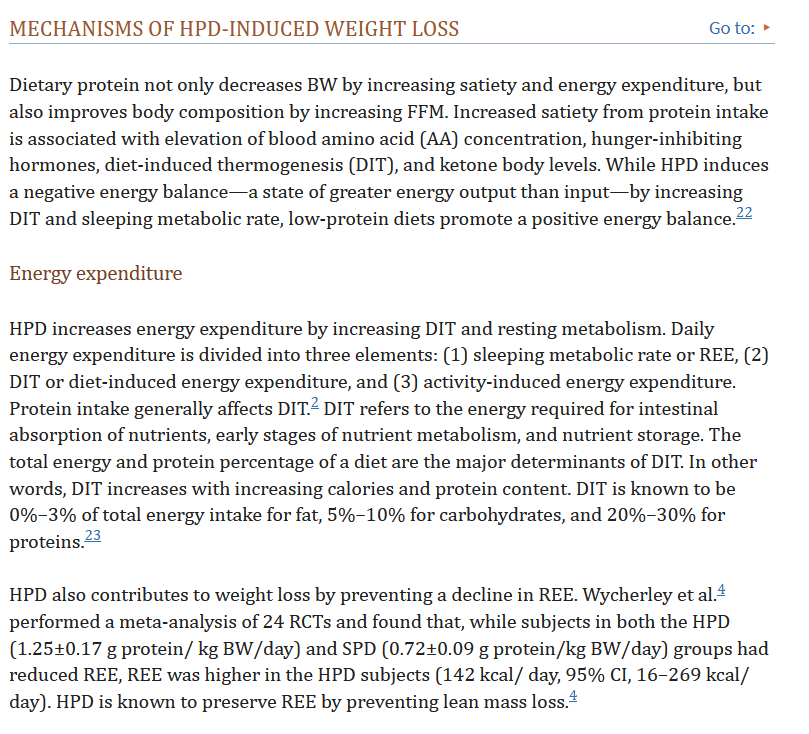They’re both going to apply. Perhaps the CIM will provide more of a mechanistic explanation, especially with insulin-resistent people (where I’d say it makes more of a difference, by definition), but if the energy balance is a certain way, then no amount of theory or modeling will change that.
A person is gaining weight (fat). Whether it’s because of intake exceeding expenditure, and the body’s evolutionarily-programmed tendency to store fat when it can, against possible starvation, or it’s because the person is eating lots of brutally refined, massively processed carbohydrates, and they’re rather ‘locked in fat-storage mode due to high insulin,’ the same thing is happening. They’re making triglycerides and the triglycerides are being added to fat cells. Whether we consider the weight of them, or the energy contained in them, or theories about all the “whys” of it, doesn’t change anything there.
Quoting from the paper: “For instance, Hall and Guo assert that, “for all practical purposes, ‘a calorie is a calorie’ when it comes to body fat and energy expenditure differences between controlled isocaloric diets varying in the ratio of carbohydrate to fat.” While acknowledging that dietary composition influences oxidation rates of respective macronutrients, the EBM holds that diet ultimately drives fat deposition by increasing total energy intake, not through calorie-independent effects on substrate partitioning.”
I think Kevin Hall is beholden to the medical-industrial complex, big food processors, big sugar, big pharma, and the ‘status quo’ (of the 1980s and 1990s, say) - some selection or combination of all those things. In some of his studies he’s willfully disregarded results that show some validity in the CIM, and engaged in silly pretense to try and dance away from the logical conclusions.
This current paper sounds like a spat between Ludwig and Hall, so Ludwig is taking potshots at Hall. They’re likely talking past each other, generalizing from the particular, etc.
“A calorie is a calorie” on the intake side is not true as stated if we’re looking at all the possible effects. If Hall says, “The EBM proves that the CIM never applies,” then he is wrong. If Hall is neglecting energy expenditure, then there too he’s wrong.
Likewise, so is Ludwig wrong if he says, “The CIM proves the EBM is invalid.”
To start with, we need to know how much a given person or group of people will be affected by carbohydate intake. If it’s one of those people who can “eat anything and never gain weight,” then it’s not going to support the CIM much. If it’s insulin-resistant people, then that’s right in the CIM’s ballpark.
The “food tastes too good” stuff - how do we quantify that? 
"Obesity results from “increased availability and marketing of a wide variety of inexpensive, convenient, energy-dense, ultra-processed foods that are high in portion size, fat, and sugar, and low in protein and fiber.”
Luwig says this is part of “the new EBM of Hall et al.” If so, that sounds pretty solid to me, i.e. I imagine that that does apply, a lot of the time. But that doesn’t “rule out the CIM” or anything…
A person could eat a whole lot of totally-unprocessed, low in fat, high in fructose, high in fiber fruit, and become obese because of it. It fits with both the CIM and the energy balance.
Totally agree, as above.

 Vegans try but I bought black salt and I can confidently say it doesn’t taste like egg. Inactive yeast powder is cute on fried cucchini but it has NO cheese flavor if you ask me. Maybe vegans trick their tastebuds with more skill, I don’t even try. Most flavorings are well, fake. The coconut flavoring I use is nice and even reminds me of coconut but coconut tastes differently. Maybe it’s the fat and other stuff that I can’t consider a separate thing? One can’t replace the other at all, that’s why my Bounty Bowl (as I won’t waste energy on making them bar shaped) badly needs both coconut flakes and coconut flavoring.
Vegans try but I bought black salt and I can confidently say it doesn’t taste like egg. Inactive yeast powder is cute on fried cucchini but it has NO cheese flavor if you ask me. Maybe vegans trick their tastebuds with more skill, I don’t even try. Most flavorings are well, fake. The coconut flavoring I use is nice and even reminds me of coconut but coconut tastes differently. Maybe it’s the fat and other stuff that I can’t consider a separate thing? One can’t replace the other at all, that’s why my Bounty Bowl (as I won’t waste energy on making them bar shaped) badly needs both coconut flakes and coconut flavoring.



